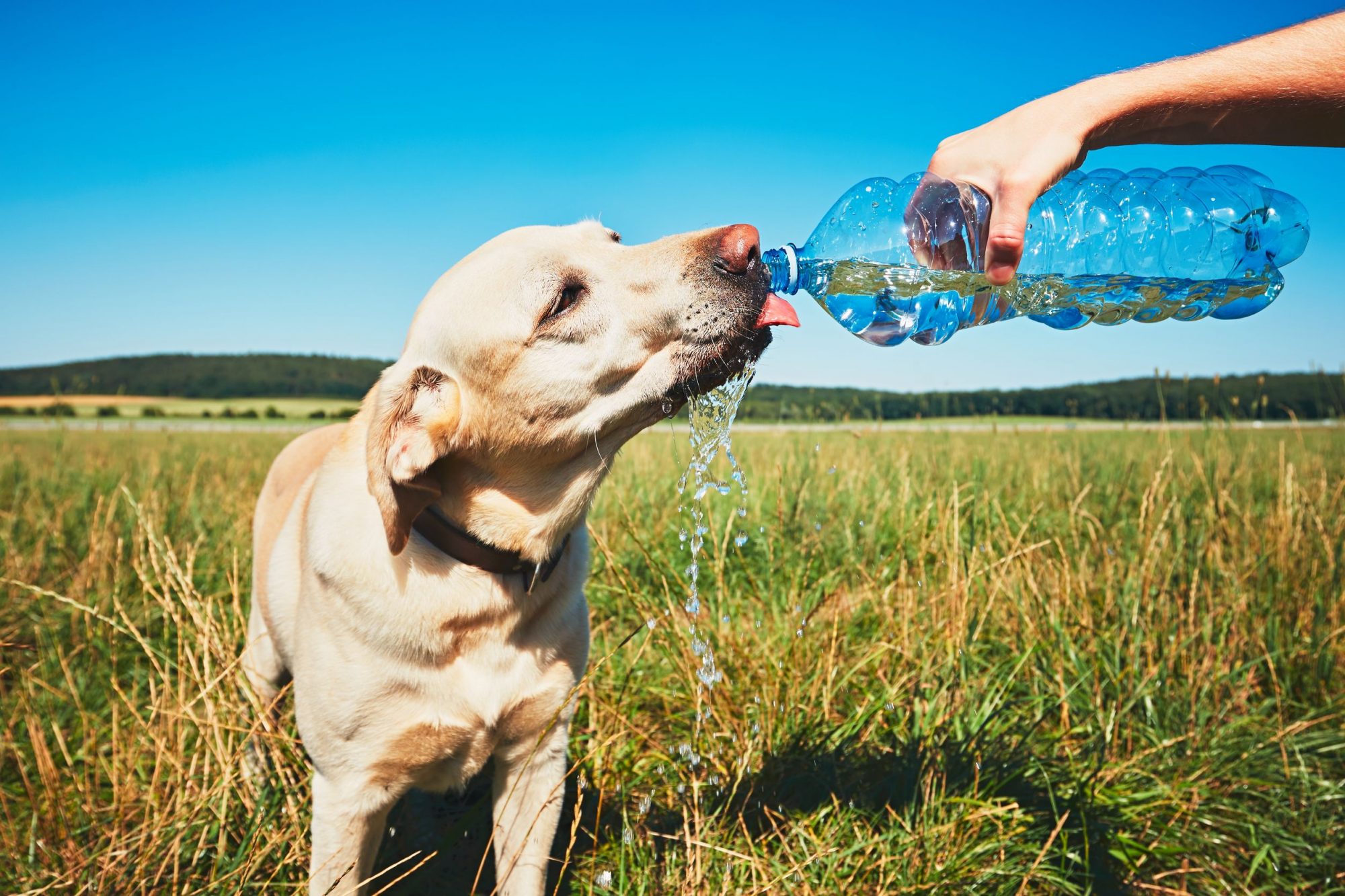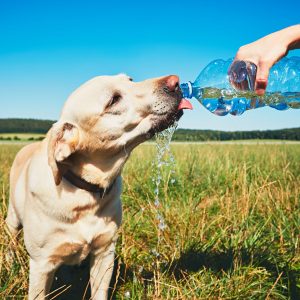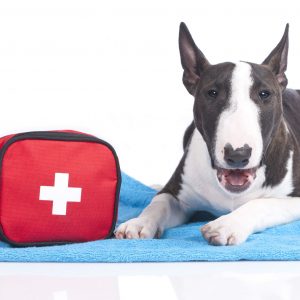Posts in Category: The Great Outdoors
When The Heat Goes Up, So Does The Danger of Heatstroke
Surviving the Heat

We are feeling the heat right now! July in Texas is sweltering and we know the heat will get worse moving forward. Hill Country Animal Hospital wants to share some important tips on how to make sure your pets stay safe in the heat this summer.
Summer is a fun time of year! Unfortunately, heat can quickly become dangerous for pets. The number one danger for pets is heatstroke.
Why are pets at risk of heatstroke?
Pets do not dissipate heat through sweating, like humans. The main method of ridding heat in pets is panting. Panting is usually an efficient method of thermoregulation for pets, but it is not as efficient as sweating is for humans. This makes pets at risk for heatstroke.
Did you know that your pet’s coat works to help protect him in the summer too? In the winter his coat serves as insulation to keep him warm and in the heat it protects him by not allowing him to take on too much heat.
You do not need to shave your pet for the summer. Just make sure he is well brushed and rid of his winter undercoat. Your pet’s coat will protect him from sun and insects.
Who is at most risk?
Any pet can become a victim to the heat. The pets listed below are at higher risk for developing heat-related problems.
- Pets who have survived an episode of heat stroke in the past
- Elderly pets
- Pets confined to cars or carriers
- Dogs and cats with short and wide faces (brachycephalic)
- Pets with a heart or breathing condition
- Pets without access to water or shade
- Overweight pets
You should never leave your pet inside a car or carrier without air conditioning.
Brachycephalic dogs are at a higher risk. Their anatomy prevents them from panting and cooling efficiently.
Overweight pets are at risk. Their weight interferes with their body’s thermoregulation. Their weight does not allow them to efficiently radiate heat from their body which allows them to cool down.
What are the signs of a heat stroke?
First, become familiar with the signs of heatstroke. Second, pay close attention to your pet’s behavior in the heat. Third, humidity plays a big role in your pet’s ability to cool down. The more humid the harder it is for your pet to cool. Watch for these signs:
- Confusion, anxious or dazed expression
- Hot to the touch or increased rectal temperature
- Seizures
- Salivation
- Whining
- Heavy panting
- Brick red gums
- Vomiting and/or diarrhea
- Increased heart rate
- Collapsing, stumbling and falling down
- Laying down and reluctant to get up
What if your pet falls victim to the heat?
If your pet becomes overheated, cool your pet down by placing cool (not cold), wet towels over his body. Pay special attention to his armpits, stomach and groin area. DO NOT USE ICE! Cooling MUST be done gradually to avoid shock. You can get first aid tips from the American Veterinary Medical Association here.
You should seek veterinary treatment at the nearest facility immediately! Visit our website for access to emergency facilities. Do not delay or take a “wait and see” approach. THIS IS AN EMERGENCY!
Your veterinarian will manage your dog’s heatstroke with intravenous fluids, any medications necessary and will gradually and safely reduce your pet’s temperature. Laboratory work (blood and urine) will likely be necessary to determine if organ damage has occurred.
Keep in mind that your pet’s temperature will likely be an indication of the severity of the situation. Your pet’s normal temperature is 101F to 102F. A temperature of 103F-104F is considered abnormal or hyperthermic. Pets with a temperature of 106F are usually considered to be a heat-related incident and we begin treatment immediately. Temperatures of 107F-109F can lead to organ failure or death.
Heatstroke can lead to brain damage, kidney damage or failure, muscle damage, liver damage, bleeding or clotting issues, lung damage, bloody diarrhea, seizures and death.
Take Precautions in the Heat

Never leave your pet in your car, even with the windows cracked or in the shade. Use air conditioners to keep the environment cool. Use fans to increase air circulation.
Make sure your pets have access to clean, fresh water at all times. If your pet is outdoors make sure he has access to shade.
Walk your dog in the shade if possible and walk your dogs early in the morning or after 6 pm. If it is not possible to stay in the shade, check the asphalt to make sure it is not too hot for your dog. If you can press the back of your hand on the asphalt for 7 seconds, it should be comfortable for your dog.
Remember, if your pet is outdoors in the heat, it is up to you to monitor his behavior. Pets don’t really understand that they are becoming too hot. If you see any dangerous symptoms, call us at 210-695-4455. Stay safe and have fun with your pet!
National Heat Awareness Day
May 31st is the National Weather Service’s National Heat Awareness Day and this is perfect timing for us to remind you to be careful out there! The heat is something that we are all too used to here in south Texas but Continue…
Continue…
Be Prepared and Avoid Disaster
Are You Prepared?
 Now is the time to get prepared. Now is the time to review what it takes to be prepared for disaster. May 11th was National Animal Disaster Preparedness Day. Even though the day has passed, we want to help you prepare in the event that you and your pets are ever involved in an evacuation or disaster. Remember, the key to staying safe is to plan ahead. DO NOT wait Continue…
Now is the time to get prepared. Now is the time to review what it takes to be prepared for disaster. May 11th was National Animal Disaster Preparedness Day. Even though the day has passed, we want to help you prepare in the event that you and your pets are ever involved in an evacuation or disaster. Remember, the key to staying safe is to plan ahead. DO NOT wait Continue…
May Is Microchip Awareness Month
What is a pet microchip?
May is Microchip Awareness Month and we want to help you become aware of the importance of microchips. A pet microchip is a small, electronic device encased in a protective shell.
 A microchip is the size of a grain of rice and is implanted under the skin of pets to provide a means of identification once the pet is scanned. A microchip is the gold standard for reuniting lost pets with owners but only if the chip is registered! Otherwise a microchip cannot be traced back to an owner. Continue…
A microchip is the size of a grain of rice and is implanted under the skin of pets to provide a means of identification once the pet is scanned. A microchip is the gold standard for reuniting lost pets with owners but only if the chip is registered! Otherwise a microchip cannot be traced back to an owner. Continue…
What Is Your Heartworm Awareness Level?
April is National Heartworm Awareness Month
Hill Country Animal Hospital wants to increase your heartworm awareness level and make sure you understand how important keeping your pet on heartworm prevention really is.

How Are Heartworms Transmitted?
Heartworms are transmitted to your dog or cat via mosquitoes. Mosquitoes become infected by biting a dog or cat that has heartworm disease and then can spread heartworms to subsequent dogs or cats that they bite. Dogs are a natural host for heartworms and that is why most of the emphasis is on prevention and treatment in dogs. Cats can be a host but they are an atypical host.
Once the animal has been infected, heartworms grow to about a foot long and live in the heart and lungs of the infected animal. In the dog Continue…
Rattlesnakes Are Still Rattling Around
Rattlesnake season is not over yet!

Copyright: steve_byland / 123RF Stock Photo
Helotes and San Antonio have been seeing days and days of steady rain and this is bringing out rattlesnakes. When it rains, snakes seek higher ground and this increases our chances of encountering them. This rain may be contributing to the high number of dogs being bitten by rattlesnakes recently. Regardless of the reason we want to remind you that rattlesnake season is not over quite yet.
Be vigilant about inspecting your yard especially if you have seen or heard of snakes in your neighborhood. We are frequently asked if snake repellent works and the answer is we don’t really know. Many of our clients use it and have not seen snakes in their yard. Would they have seen them otherwise? Who knows, but it can’t hurt to try as long as you aren’t putting yourself or your dog at risk with the repellent. Continue…
Canine Influenza Comes to Texas
Is all the hype about Canine influenza virus just that, hype? Unfortunately it is not. Canine influenza virus or CIV, is the real deal and it is here in Texas. We are hoping that we aren’t facing the same kind of outbreak that the Midwest faced in 2015 but so far, we do have 5 confirmed cases in various counties. There have been two confirmed cases in Houston (Harris County), and we were just made aware of 3 more cases in the following counties: Fort Bend, Hood and Travis. As you know, Travis County is close to home so we really want to make sure that we get the word out to our clients.
Hill Country Animal Hospital has the combined vaccine that protects dogs from both strains of CIV with one injection. If your dog has never been vaccinated for either strain, your dog will require an initial vaccine and a booster 3-4 weeks later. If your dog has been fully vaccinated for either strain of CIV to include an initial vaccine and the booster, your dog will only need a booster of this new, combination vaccine. If you aren’t sure about your dog’s risk factors or vaccine status, call us at 210-695-4455. Continue…
